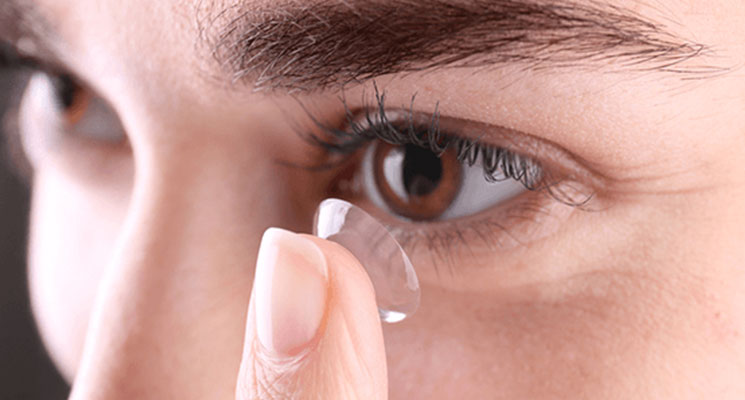This is pretty unarguable to pick one between polycarbonate and trivex. The two lenses share the same features, adding impact-resistance, lightweight, UV protection, and lightweight. Both lenses have their own importance in the eyewear world because safety is incomplete without these two lenses. But of course, they have a slight difference that creates confusion for many users in deciding which one is more suitable for their eyes.
Undoubtedly, polycarbonate and trivex are the ultimate options for eyes safety, and no other material can replace them. They are the best options for all eyewear, like sunglasses, sports glasses, and Rx safety glasses. The significant statistic about both lenses is here to make the ultimate decision. And the good thing is both lenses are superb options for children’s eyewear.
Polycarbonate
- 586 refractive index
- 30 Abbe value
- 2 g/cm3 density
- 385nm to block ultraviolet rays
Trivex
- 53 refractive index
- 43-45 Abbe value
- g/cm3 lightest density for corrective lenses
- 380nm to block ultraviolet rays
History of polycarbonate lenses
However, the first existence of polycarbonate was for aerospace applications. Thus, this material is used in the space helmets and windshields of space shuttles. But after some time, polycarbonate was considered appropriate for the eyewear industry because of its impact resistance and lightweight features.
Today, polycarbonate is the basic standard of sports specs, children’s safety glasses, and safety glasses with readers for working. They have a feature of less fracture than traditional lenses. Besides, these lenses are the ultimate option for frameless eyewear for a strong prescription.
The thermoplastic polycarbonate material is available for little pallets. But in the making process of lenses, it is known as injected molding because small pellets of polycarbonate are heated to bring in a melting state. The melted polycarbonate is quickly injected into lens form, compressed, and allowed to cool for getting in finished products within a short time.
History of Trivex lenses
Trivex lenses are also impact-rated and lightweight material for specs lenses. They are also a superb option for safety reading glasses and even consider best for child’s eyeglasses. In 2001, Trivex lenses were founded by PPG Industries and revealed that these lenses are impact rated and lightweight than typical eyewear lenses like glass or standard plastic. The lenses are crafted by the urethane monomer. However, they have the same molding method as standard plastic lenses. The melted form of a lens is baked until you get in perfect shape. This feature is more advantageous over injected molted material polycarbonate lenses.
Polycarbonate VS Trivex lenses (A quick comparison)
There is the best comparison between Trivex and polycarbonate lenses that will aid in making a final decision on which lens is the ultimate option for your eyeglasses.
- Optic central: Trivex lenses have low internal stress and offer a sharp optic center than polycarbonate lenses.
- Optics-peripheral: The Abbe value of Trivex lenses is higher and offers a sharp optic-peripheral than polycarbonate lenses. Besides, they have low chromatic aberration.
- Thickness: The thickness of polycarbonate lenses is 10 times less than Trivex
- Weight: Polycarbonate lenses are 10 times heavier than Trivex lenses
- Impact-resistance: Bothe lenses have compatible impact resistance
- UV protection: Both lenses can block 100% ultraviolet rays, and no need for any special coating of UV protection over lenses.
- Availability: Polycarbonate lenses come in various designs, like progressive and Bifocal safety glasses lenses. But Trivex lenses have limited options in a variety of lenses. Photochromic lenses come in both materials.
- Price tag: However, the cost factor varies with the choice of lenses and need. But Trivex lenses are a little more costly than polycarbonate lenses in many eyewear stores.
But before making a final decision, consult with an expert optician or professional eye care and discuss all plus and negative points of Trivex and polycarbonate lenses. Choose the best option that comes under your budget.
Scratch resistance protection
Undoubtedly, polycarbonate and Trivex lenses are highly impact-rated than standard plastic lenses. Besides, the lightweight feature makes them comparatively softer than other materials. Thus, polycarbonate and Trivex lenses require an anti-scratch coating to avoid scratching on the lens surface. Today, modern techniques are used to make the surface of Trivex and polycarbonate lenses hard like glass material. Therefore, many optical stores provide a warranty for scratching over lenses for a specific period.
Which material is perfect for safety eyewear frame?
For ultimate eye protection, Trivex and polycarbonate lenses are the absolute solutions. Thus, if you require definite safety during sports or work, you need high-quality eyewear. And no other materials can provide you with better freedom of protection than Trivex and polycarbonate lenses. You can easily find and add Trivex and polycarbonate lenses from safetyeyeglasses.com.
Summary
We have discussed a few considerably significant points above. In cases of average prescription, the material doesn’t get preference because many people ignore this factor. But when you add any coating, impact resistance is more considerable. And no other material offers the best impact resistance than polycarbonate and Trivex. However, both materials have a minor difference from expectations. But overall performance, polycarbonate lenses are significantly less expensive than Trivex lenses. It ups to you.

